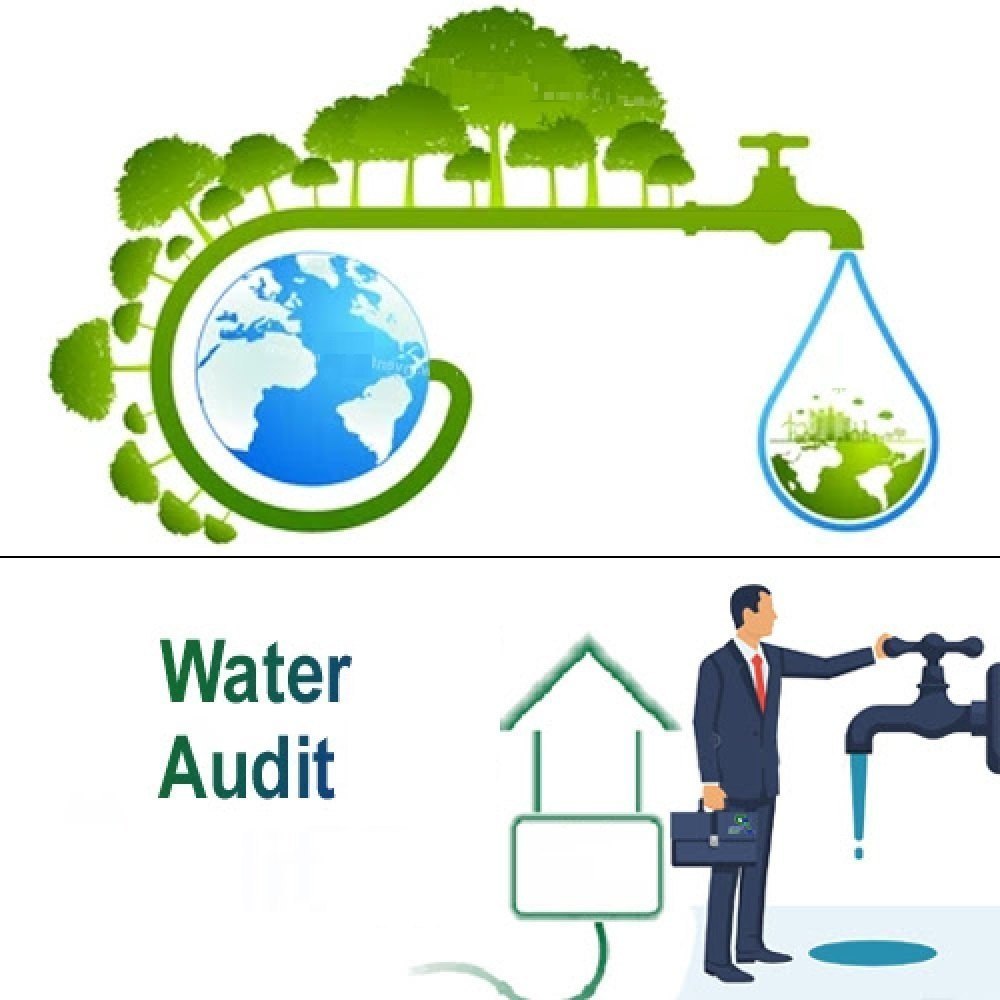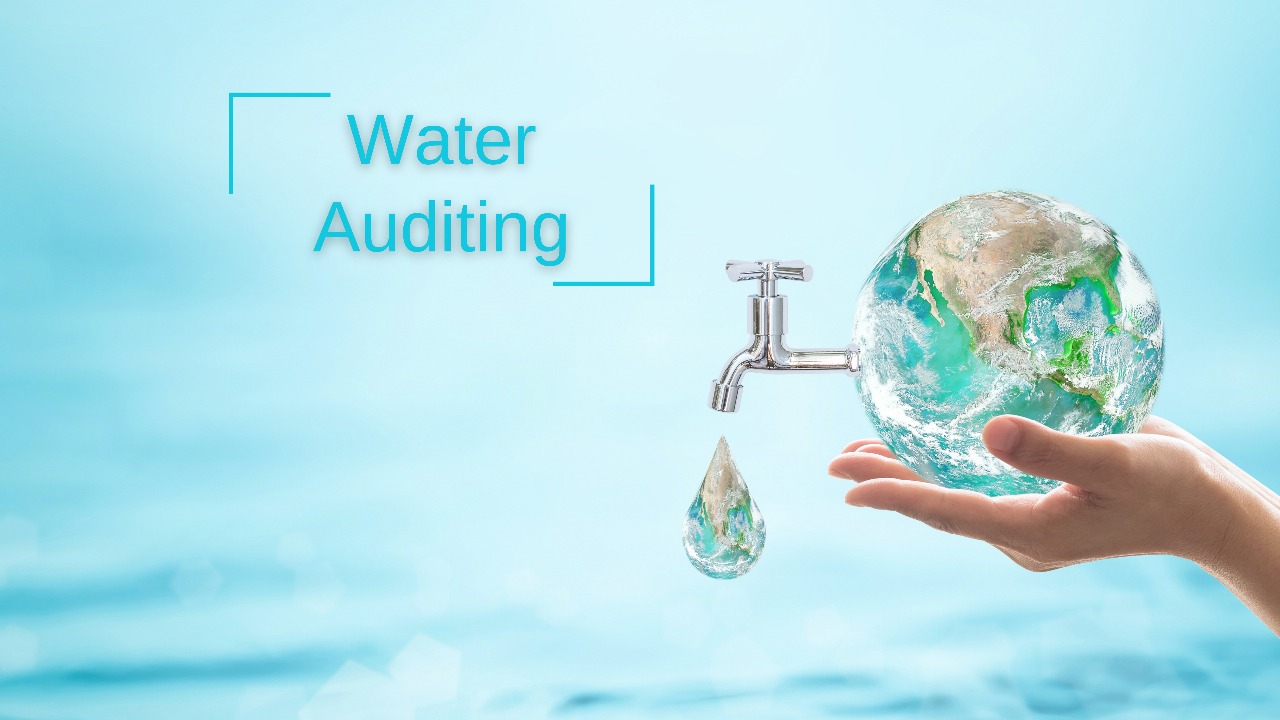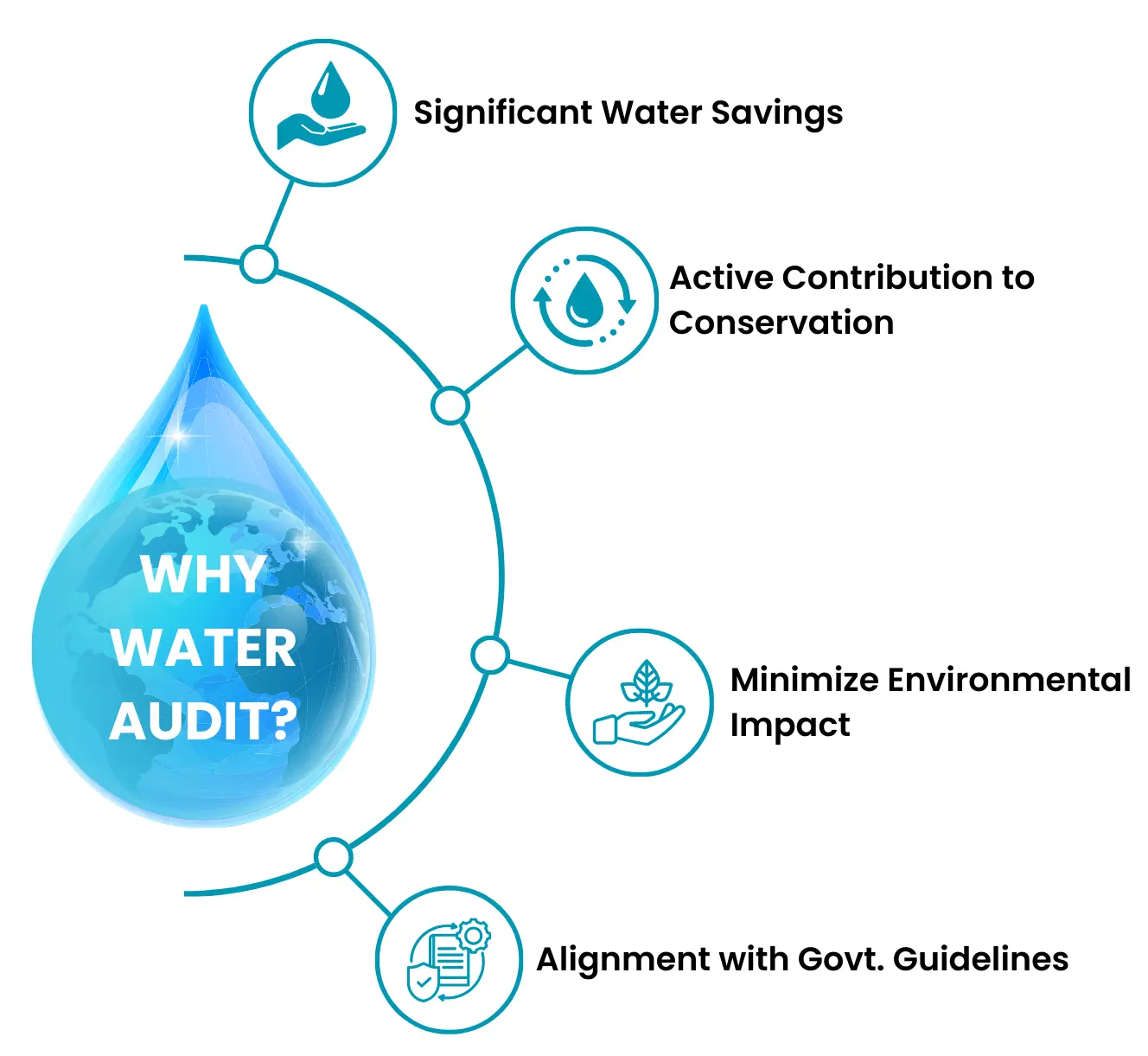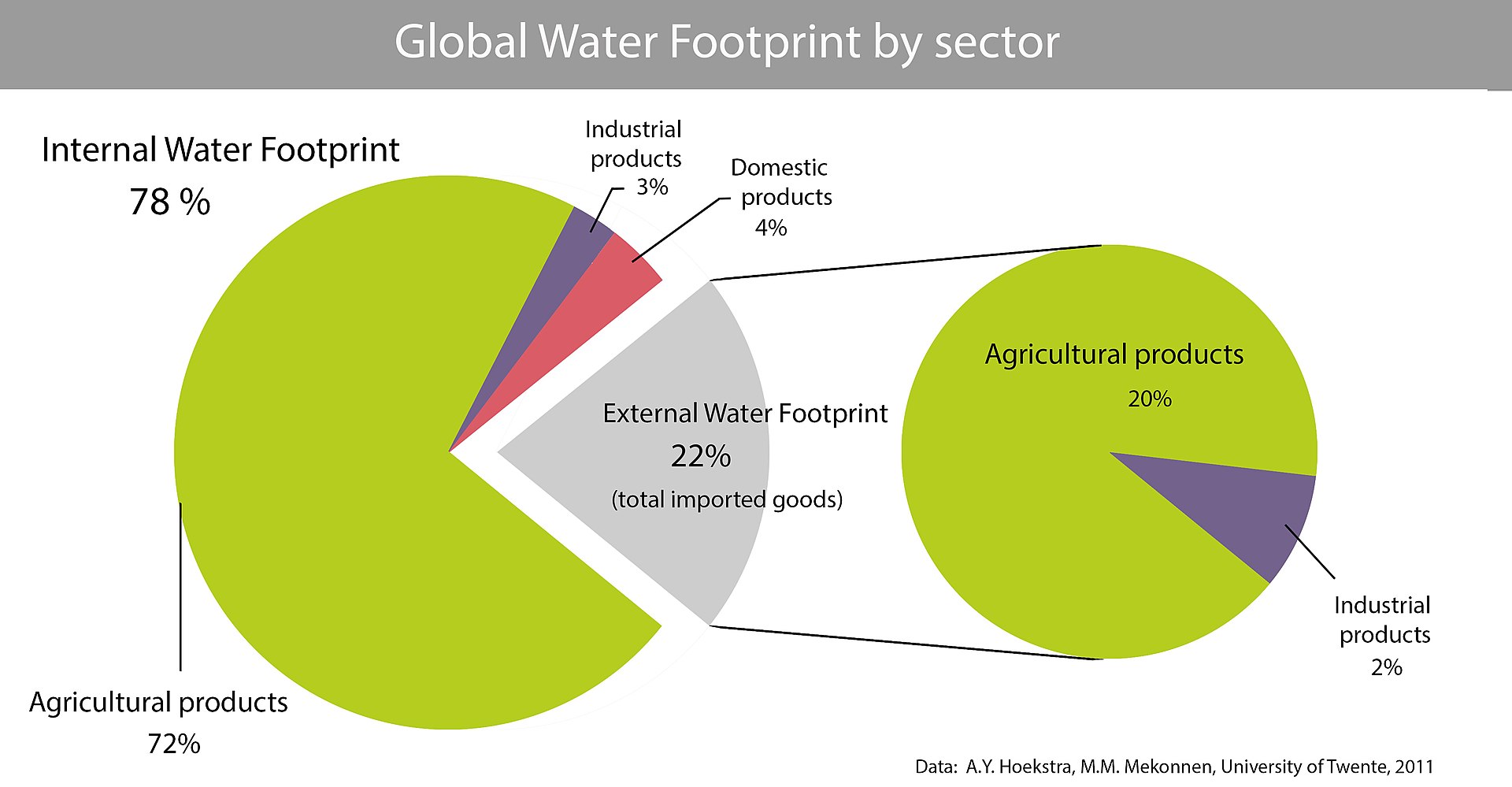
Water Auditing
Water auditing is a comprehensive process that examines how water is being used within a facility, building, or system. It involves carefully analyzing water consumption patterns, inspecting equipment and infrastructure, and reviewing operational practices to get a clear picture of where and how water is utilized.
The primary goal of a
A well-executed water audit not only helps conserve this vital resource but also

Type of Water Auditing
1. Residential Water Audits🏠
Residential water audits are conducted in homes to analyze how water is being used on a day-to-day basis. These audits:
Identify leaks in taps, toilets, and pipes.Evaluate the efficiency of water-using appliances like washing machines and dishwashers.Recommend water-saving fixtures and behavioral changes. These audits help homeowners lower their utility bills and contribute to water conservation.
2. Commercial Water Audits🏢
Commercial audits focus on water use in office buildings, hotels, malls, and other businesses. They:
Analyze water bills and meter readings to spot inefficiencies.Inspect restrooms, kitchens, landscaping, and HVAC systems.Suggest upgrades to water-efficient technologies and practices. They are essential for reducing operational costs and supporting sustainability goals in the business sector.

3. Industrial Water Audits🏭
Industrial audits assess water usage in factories, processing plants, and manufacturing units. These audits:
Map out water flow in production processes.Detect leaks, overuse, or process inefficiencies.Recommend recycling or reuse systems to reduce water withdrawal. They help industries comply with regulations and significantly cut down on water wastage.
4. Agricultural Water Audits🌾
These audits are crucial for farms and irrigation-heavy areas. They:
Evaluate irrigation practices and system efficiency.Compare water use with crop requirements.Suggest methods like drip irrigation or scheduling improvements. Agricultural audits help farmers conserve water, enhance productivity, and promote sustainable farming.

Our Water Audit Process
Initial Assessment: We begin by gathering data on your current water usage, billing information, and existing infrastructure.On-Site Inspection: Our experts conduct a thorough examination of your facilities to identify leaks, inefficient fixtures, and areas of excessive consumption.Data Analysis: Using advanced tools, we analyze the collected data to pinpoint inefficiencies and calculate potential savings.Customized Recommendations: We provide a detailed report outlining actionable steps to improve water efficiency, such as upgrading fixtures, repairing leaks, or implementing recycling systems.Implementation Support: Our team assists you in executing the recommended measures, ensuring a smooth transition to more efficient water usage.

🌍Global Water Footprint by Sector
Understanding how water is used across various sectors is essential for managing this precious resource sustainably. The global water footprint is divided into internal and external components, with key sectors like agriculture, industry, and domestic products contributing significantly.

Agricultural Products: A staggering 72% of internal water usage goes into food and farming.Domestic Products: Make up 4% of the internal footprint.Industrial Products: Account for 3%.
Agricultural Imports: Form the majority with 20%.Industrial Imports: Make up the remaining 2%.
At Kinetic Span, our water auditing services help you understand and manage water usage more efficiently—whether you're at home, running a business, or operating an industrial or agricultural facility. Through detailed analysis, on-site inspections, and data-driven insights, we identify leaks, inefficiencies, and opportunities for water conservation and cost reduction.
From Homes to Industries — Tailored Water Audit Solutions That Save Costs & Resources.
© 2025 Kinetic Span Pvt Ltd. All Rights Reserved.

